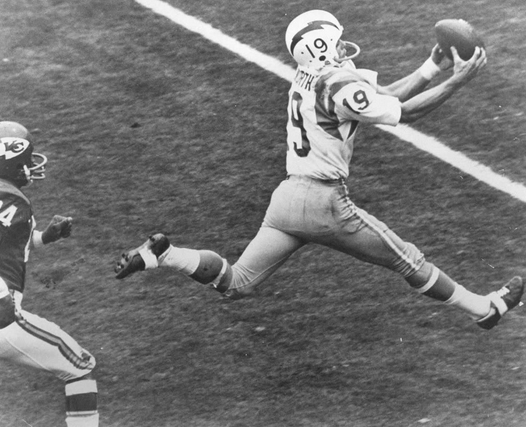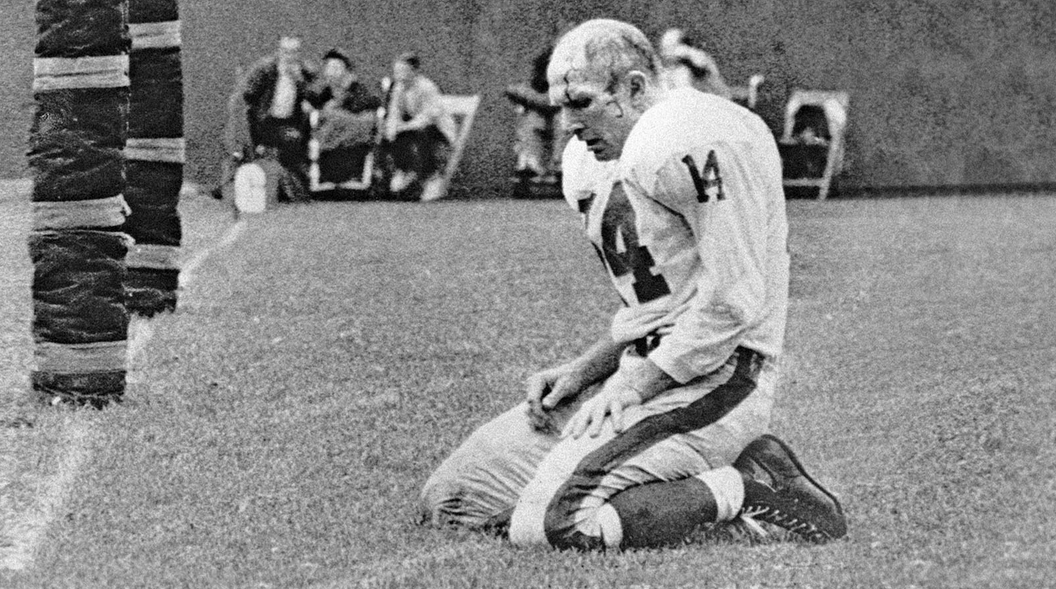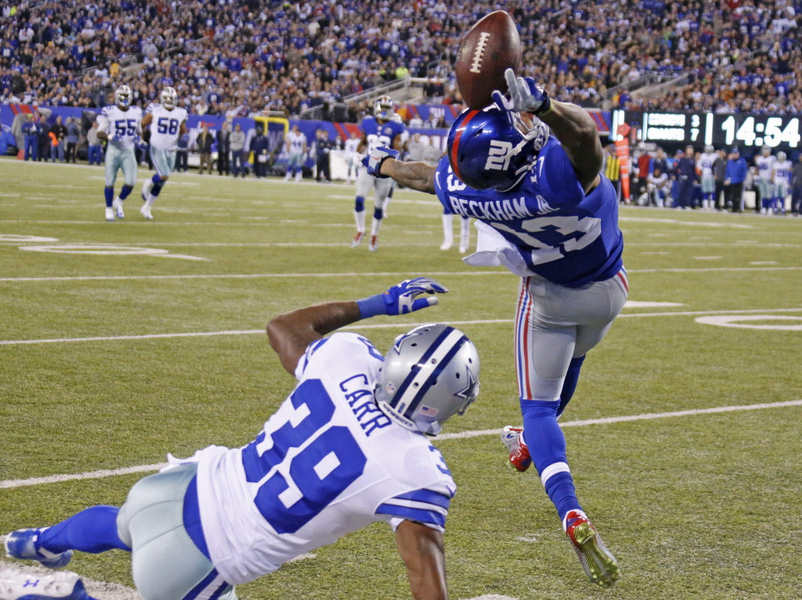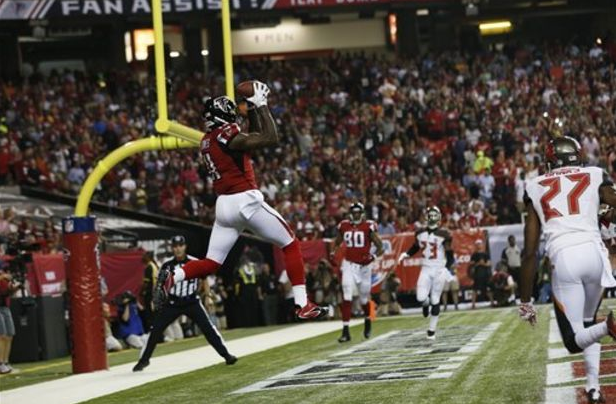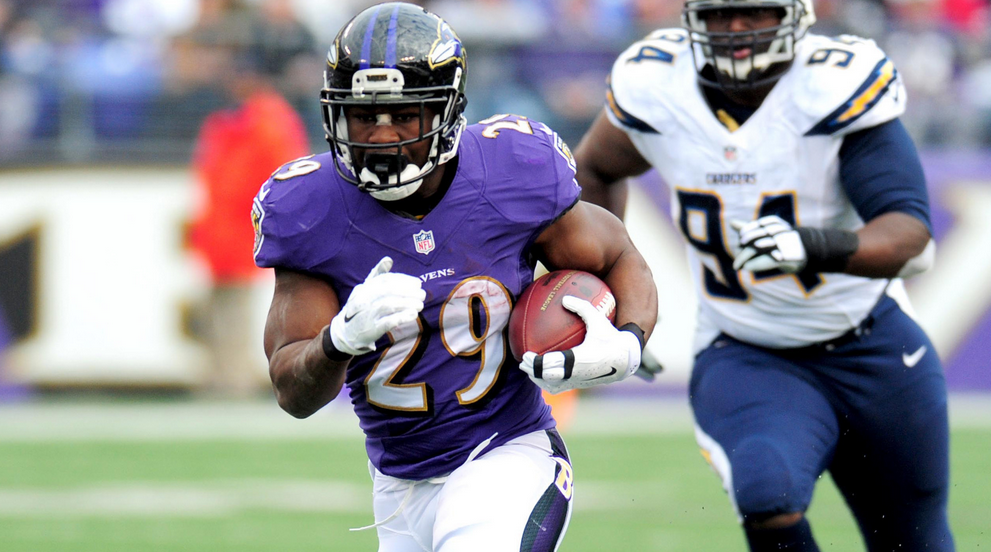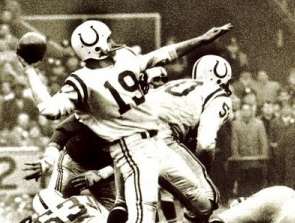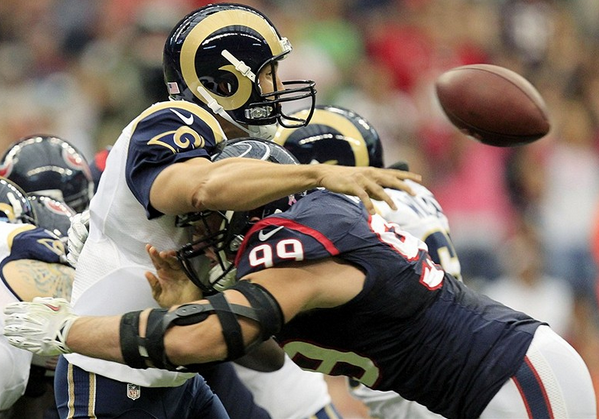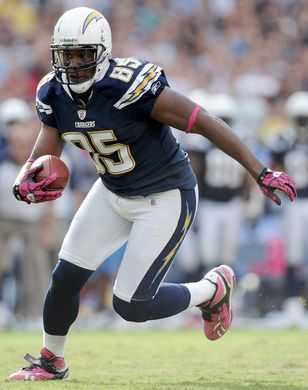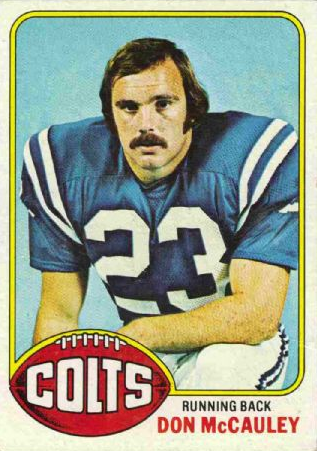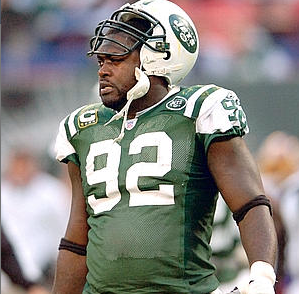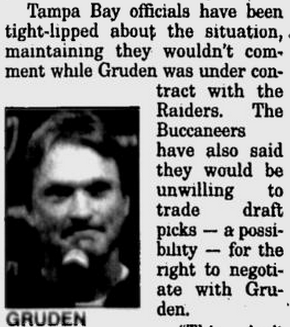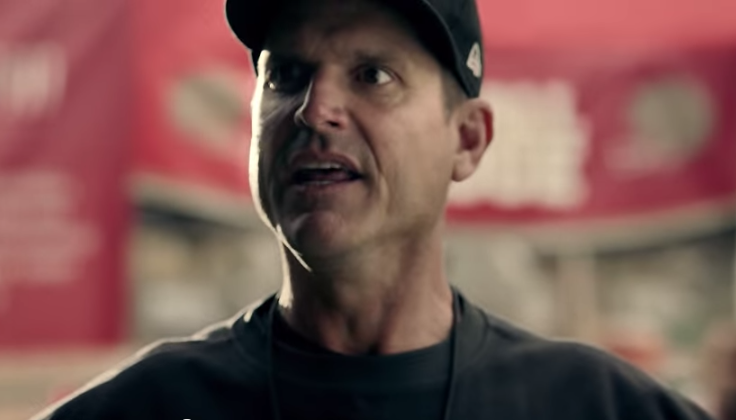The Broncos and John Fox went their separate ways this week — despite 40 wins the past three seasons and a trip to the Super Bowl a year ago. What doomed the marriage, general manager John Elway said, is that “two years in a row, it didn’t feel like we went out kicking and screaming because of . . . the way we played the last game.”
Elway thinks the team was “right there,” that Fox had all the necessary ingredients to win a title. Of course, GMs tend to think like that. They’re the ones who gather the ingredients. He’s also disappointed, no doubt, that Fox couldn’t do with Peyton Manning what Mike Shanahan did with him late in his career: add a ring or two to his otherwise glowing resumé.
What Elway might be forgetting is that it’s much harder to win the AFC in the 2000s than it was in the ’80s and ’90s, when he played. Back then it was very much the junior conference, and its best teams often got manhandled in The Big Game by the 49ers, Redskins and the rest. (During the 16–year stretch from 1981 to 1996, the AFC won exactly one Super Bowl — and John’s Denver club lost three of them by an average of 32 points.)
It’s different now. The Patriots are on an historic 14-year run that has seen them win three championships and reach the conference title game nine times. The Steelers and Ravens, meanwhile, both have won two Super Bowls since 2000. Then there are the Colts, who knocked off the Broncos last week and might have several rings in their future as long as Andrew Luck remains ambulatory. Tom Brady, Ben Roethlisberger, Joe Flacco, Luck — it’s just a more treacherous course to navigate, even if you do have Manning on your side.
But Elway, in the NFL tradition, is convinced Denver should have done better. Just win, baby. If it makes Fox — who has already found a new job with the Bears — feel any better, he’s hardly the first coach this has happened to after a successful season. In fact, in the ’40s, two were fired after taking their teams to the title game (and losing). The details:
● Marty Schottenheimer, Chargers, 2006: Went an AFC-best 14-2 in his final season, but bombed out in the playoffs against the Patriots. Club president Dean Spanos initially said
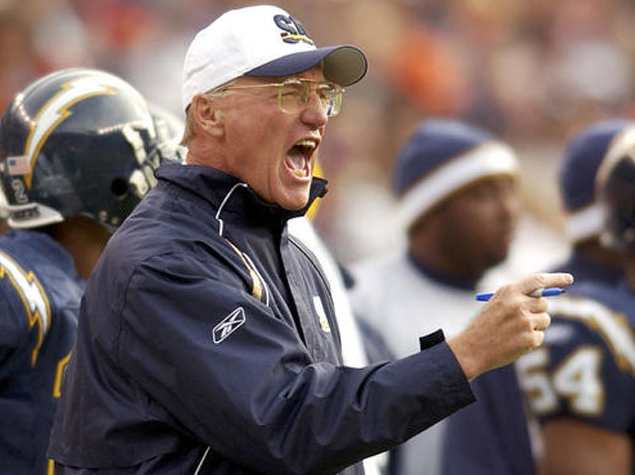
Marty Schottenheimer during his Chargers days.
Schottenheimer would return the next year, then changed his mind after Marty turned down a one-year contract extension — he still had a year left on his deal — and lost four assistant coaches (one of whom he wanted to replace with his brother Brian, which didn’t please management at all). Just as problematical, according to Spanos, was Schottenheimer’s “dysfunctional” relationship with general manager A.J. Smith.
Record with the Chargers: 47-35, .573 (0-2 in the playoffs). Replaced by Norv Turner, who took San Diego to the AFC championship game in his first season and had a 59-43 (.578) record in his six years with the Bolts.
● George Seifert, 49ers, 1996: Went 12-4 in his final season, 1-1 in the playoffs (losing to the eventual champion Packers in the second round). Resigned after the club told him it wouldn’t extend his contract beyond the next year, making him a lame duck.
Record with the 49ers: 108-35, .755 (10-5 in the playoffs), two titles (1989, ’94). Replaced by Steve Mariucci, who lasted six seasons (60-43, .583) and led the Niners to one NFC championship game.
● Ted Marchibroda, Colts, 1995: Went 9-7 in his final season, but came within a Hail Mary pass in the AFC title game of reaching the Super Bowl. (Jim Harbaugh threw it, wideout Aaron Bailey
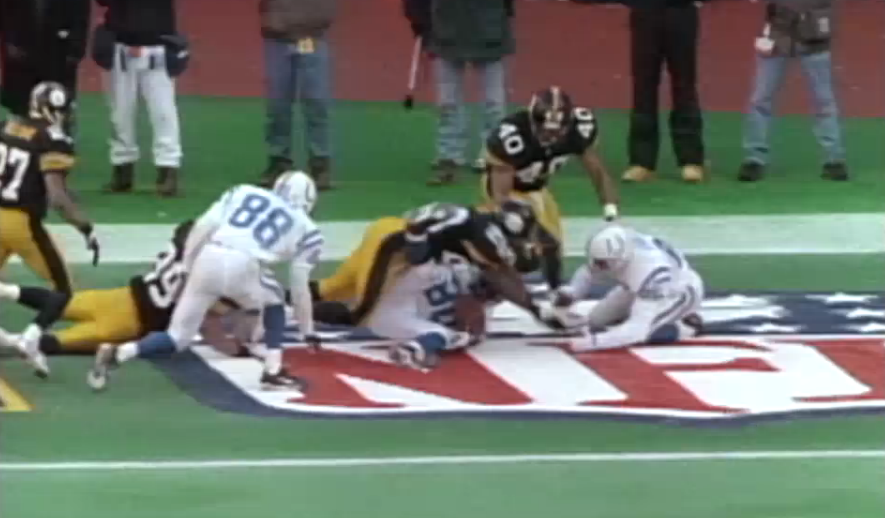
Ted Marchibroda and the Colts came this close to the Super Bowl in 1995.
nearly caught it.) When the team offered Marchibroda only a one-year deal — he was 64 and at the end of his contract — he rejected it and opted to become the first coach of the Ravens (the transplanted Browns).
Record with the Colts (in his second tour of duty): 32-35, .478 (2-1 the playoffs). Replaced by offensive coordinator Lindy Infante, who was fired after just two seasons when Indianapolis nosedived to 3-13 in ’97.
● Bum Phillips, Oilers, 1980: Went 11-5 in his final season, losing in the first round of the playoffs to the Raiders, who won it all. The previous two years, Houston had reached the NFC championship game but couldn’t get past the Steelers. Owner Bud Adams wanted Phillips to hire an offensive coordinator — he was the only coach in the league who didn’t have one — but Bum balked. His “adamant refusal to even consider that the offense needs some fresh blood and input weighed heavily in my decision,” Adams said. (And, truth be known, the Oilers’ attack was awfully conservative: pound away with Earl Campbell and throw to tight ends Mike Barber, Dave Casper and Rich Caster.)
Record with the Oilers: 59-38, .608 (4-3 in the playoffs). Replaced by defensive coordinator Ed Biles, who didn’t make it through his third season (8-23, .258).
● Chuck Knox, Rams, 1977: Went 10-4 in his final season, losing in the first round of the playoffs to the Vikings. This followed losses in three straight NFC title games. The year before, Knox had flirted with taking the Lions job, which didn’t exactly endear him to owner Dan Reeves. Both men were ready for a change, and Reeves was particularly interested in the Cardinals’ Don Coryell. But when St. Louis asked for a first-round pick as compensation, he decided to rehire George Allen, who had just left the Redskins. What a disaster. He ended up firing Allen during training camp — the players rebelled at his strict regimen — and promoting offensive coordinator Ray Malavasi.
Record with the Rams: 57-20-1, .737 (3-5 in the playoffs). Malavasi got the Rams to the Super Bowl in his second season — the Steelers beat them 31-19 — but was just 43-36 (.544) in his six years at the helm.
● George Allen, Rams, 1970: Went 9-4-1 in his final season, missing the playoffs (in the days before wild cards). Reeves talked about having philosophical differences with his coach, but it was more a matter of Allen’s postseason failures and the fact that neither man was easy to work with. “I was willing to cooperate with him,” George said, “but it is not my philosophy to be a ‘yes man.’”
Record with the Rams: 49-19-4, .708 (0-2 in the playoffs). Replaced by UCLA coach Tommy Prothro, who was gone two years later (14-12-2, .536).
● Clark Shaughnessy, Los Angeles Rams, 1949: Went 8-2-2 in his final season, losing in the title game to the defending champion Eagles. Reeves — there’s that name again — got rid of him the
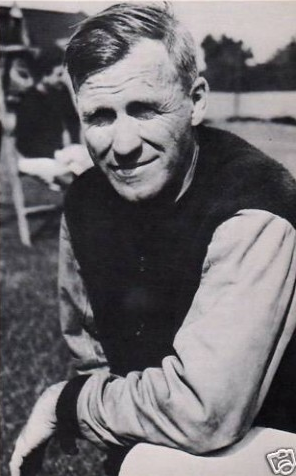
Clark Shaughnessy, a father of the T formation.
following February, citing “internal friction between Shaughnessy and his assistants, players and others associated with the Rams.” Shag (as he was called) was stunned. “Inasmuch as this was the first time during my two years as a head coach that any expression of dissatisfaction relative to my services was made to me by any official of the Rams organization,” he said, “it leaves me at a loss for words.”
Record with the Rams: 14-8-3, .620 (0-1 in the playoffs). Replaced by line coach Joe Stydahar, who guided L.A. to the next two championship games, splitting them with the Browns (30-28 loss, 24-17 win). So maybe Reeves’ move wasn’t the worst in NFL history. But Stydahar (19-9, .679) wasn’t given much rope, either. The year after winning the title, he was dumped following a season-opening 37-7 defeat at Cleveland. As I said, his boss was a hard guy to satisfy.
● Dud DeGroot, Redskins, 1945: Went 8-2 in his final season, losing by a point (15-14) in the championship game to the Cleveland Rams (on a wickedly cold day by The Lake). George Preston Marshall, an owner not known for his patience, forced him out — DeGroot technically resigned — after just two years. The most interesting explanation I’ve come across is that Marshall wanted the Redskins to switch to sneakers during the ’45 title game because the field was frozen, but Dud refused because he and Rams coach Adam Walsh had agreed beforehand to stick with cleats. (I kid you not.)
Record with the Redskins: 14-6-1, .690 (0-1 in the playoffs). Replaced by line coach/Redskins legend Turk Edwards, who was axed at the end of his third season. (16-18-1, .471).
You can see the pattern here: Postseason misery, difficult owners, stubborn coaches and — in many cases, perhaps — unrealistic expectations. You also can see The Next Guy wasn’t usually much of an improvement over The Guy Who Preceded Him.
Anyway, John Fox, after four seasons of fine work in Denver, is off to Chicago to try to get the Bears’ house in order — and to find happiness where he can, fleeting as it is in pro football.
Source: pro-football-reference.com

